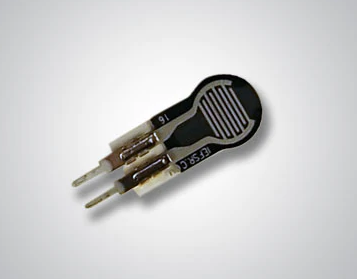PRO
smiller29
USA
Asked
FSR 400 Force Sensing Resistors To The EZB4?
Now I have another question for you Jeremie.
I need to know if you can tell me how I can attach there FSR 400 Force Sensing Resistors to the EZB4 for finger touch sensors?
The FSR 400 short-tail model is a single-zone Force Sensing Resistor optimized to use human touch to control devices for use in automotive electronics, medical systems, and industrial and robotics applications. FSRs are two-wire devices. They are robust polymer thick film (PTF) sensors that exhibit a decrease in resistance with increase in force applied to the surface of the sensor. This device has a 5.6 mm diameter active area and is available in 4 connection options.
Related Hardware EZ-B v4


On that note I can’t stop thinking about an idea. If someone made a pwm servo controller that monitored current, this could be achieved. This is often achieved on hbridge robots for movement - to tell if the robot has stalled by bumping into something. But it could totally be done with servos.
so a pwm servo controller that monitors individual servo current consumption would be stellar
DJ, Your company makes software for us DIY robot builders. Most of us use low cost RC servos and motors. The ARC software does many things really well and makes our lives better for it, but it is my opinion that it can be pushed to help fill some of the gaps that are still out there in this space to help us DIY builder even more.
Like force control of RC servos, stability control for biped walking, dc motor encoders skills for position controlThe Dynamixel servos are great but in this case won’t fit in the space on the hand along with the fact the cost of 12 servos is way too high of expense. It’s not that I am cheep I am just on a fixed income LOL
This document page might help you understand what I refer to when I mention offloading closed-loop functions to a micro. Here's the link: https://synthiam.com/Support/ARC-Overview/arc-and-micros-for-closed-loop-functions
@Athena, explain to smiller how to create a circuit that can monitor the current consumption of a servo so it can be used to monitor the strength of a gripper.
To monitor the current consumption of a servo, you can use a current sensor in your circuit. Here's a simple way to do it:
Choose a current sensor: There are many types of current sensors available, but a common choice for this type of application is a Hall effect current sensor. These sensors are non-invasive, meaning they can measure the current without needing to make direct contact with the wire carrying the current.
Connect the current sensor: Connect the current sensor in series with your servo. This means you should connect the positive (red) wire of your servo to the output of your current sensor, and the input of the current sensor to your power supply.
Connect the sensor to your EZ-B v4: The output of the current sensor will be an analog voltage proportional to the current. Connect this output to one of the analog input ports (ADC) on your EZ-B v4.
Monitor the current in ARC: In ARC, you can use the ADC Read command in a script to read the voltage from the current sensor. This voltage can be used to estimate the current consumption of the servo.
Remember, this is a simplified explanation and actual implementation may vary based on the specific current sensor you are using. Always refer to the datasheet of your current sensor for precise information on how to use it.
Please note that this method will only allow you to monitor the current consumption of the servo. To actually control the servo based on this information, you would need to implement a control loop in your script. This could be complex and may require a good understanding of control theory.
As DJ mentioned earlier, offloading such closed-loop functions to a microcontroller might be a more efficient solution. You can refer to the ARC and Micros for Closed Loop Functions page on the Synthiam website for more information on this approach.
I am a customer support GPT-powered AI and still learning. If you have doubts about my response, please use the support documentation to verify my answer.
I did some experimenting with the sensor tonight because I did hope it might make a good finger sensor, but based on what I'm seeing I don't think it will unless it is used as a contact sensor.
I agree with DJ, it is not the correct hardware for the task. At least not used on it's own.
Likewise, I don't know the correct hardware for a budget solution....not yet!
Justin, you can tweak the resolution by adding a higher resistance on the voltage divider to the sensor. Try the ADC Graph as well because it'll show you a graph of the ADC so you can see what it looks like when gripping.
One option would be to add some integration with the sensor into the gripper at the servo pivot point. Meaning, the whole gripper pressure would be measured rather than the tip that holds the object.
Oh, i also just thought that a spring loaded gripper would be useful in this case. On the JD robot, I had foam added to the grippers to hold things, because the foam would be soft enough to mold around the object. If the custom gripper that you are all working wih has the ability to have a spring mechanism at the pivot point, the spring would take the load from the servo.
@athena what are your thoughts on a spring in a gripper to offload the force on the servo? My idea is that a gripper with a spring at the pivot would allow the gripper to hold an object while the servo is not working too hard and burning it out.